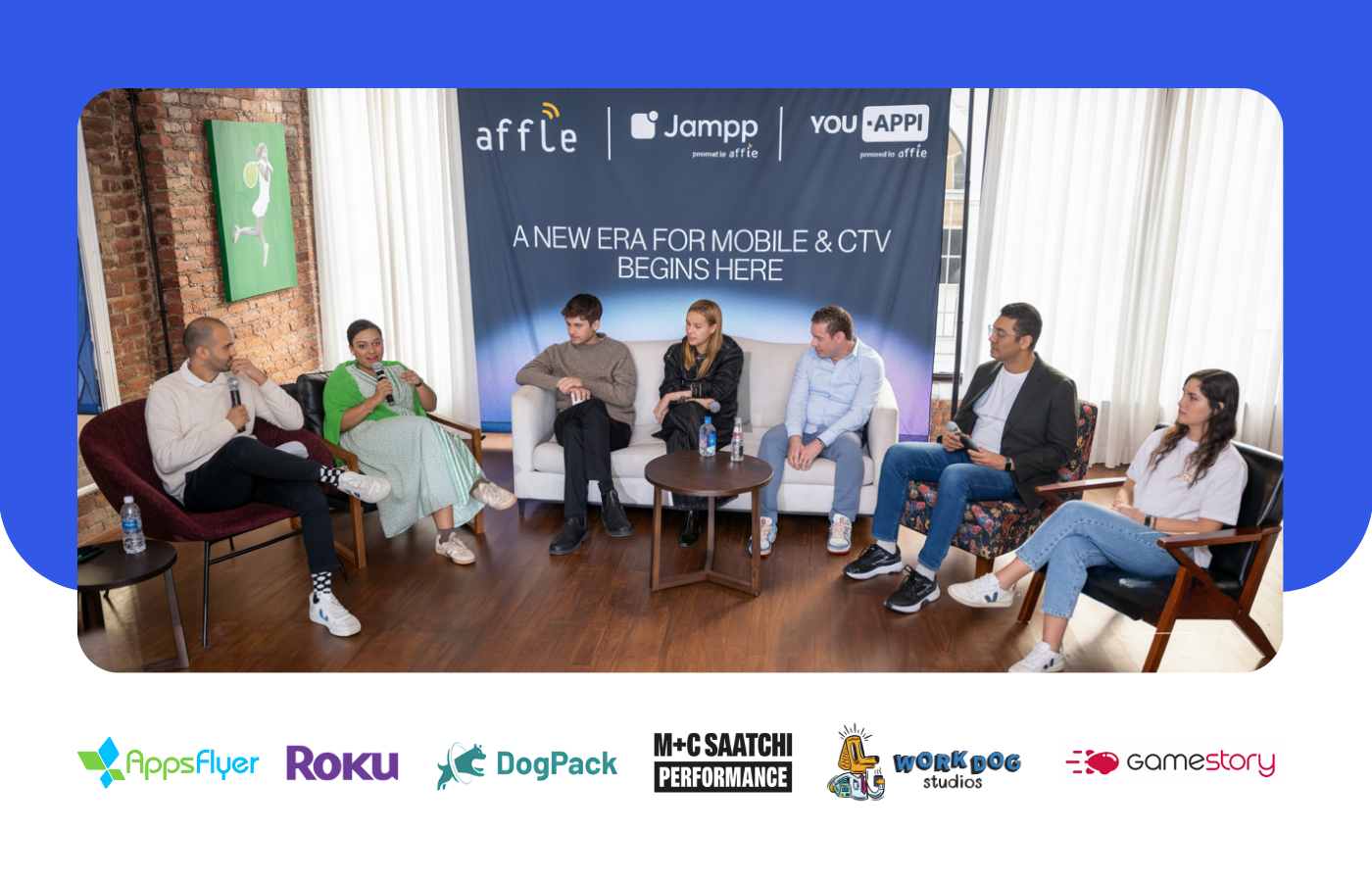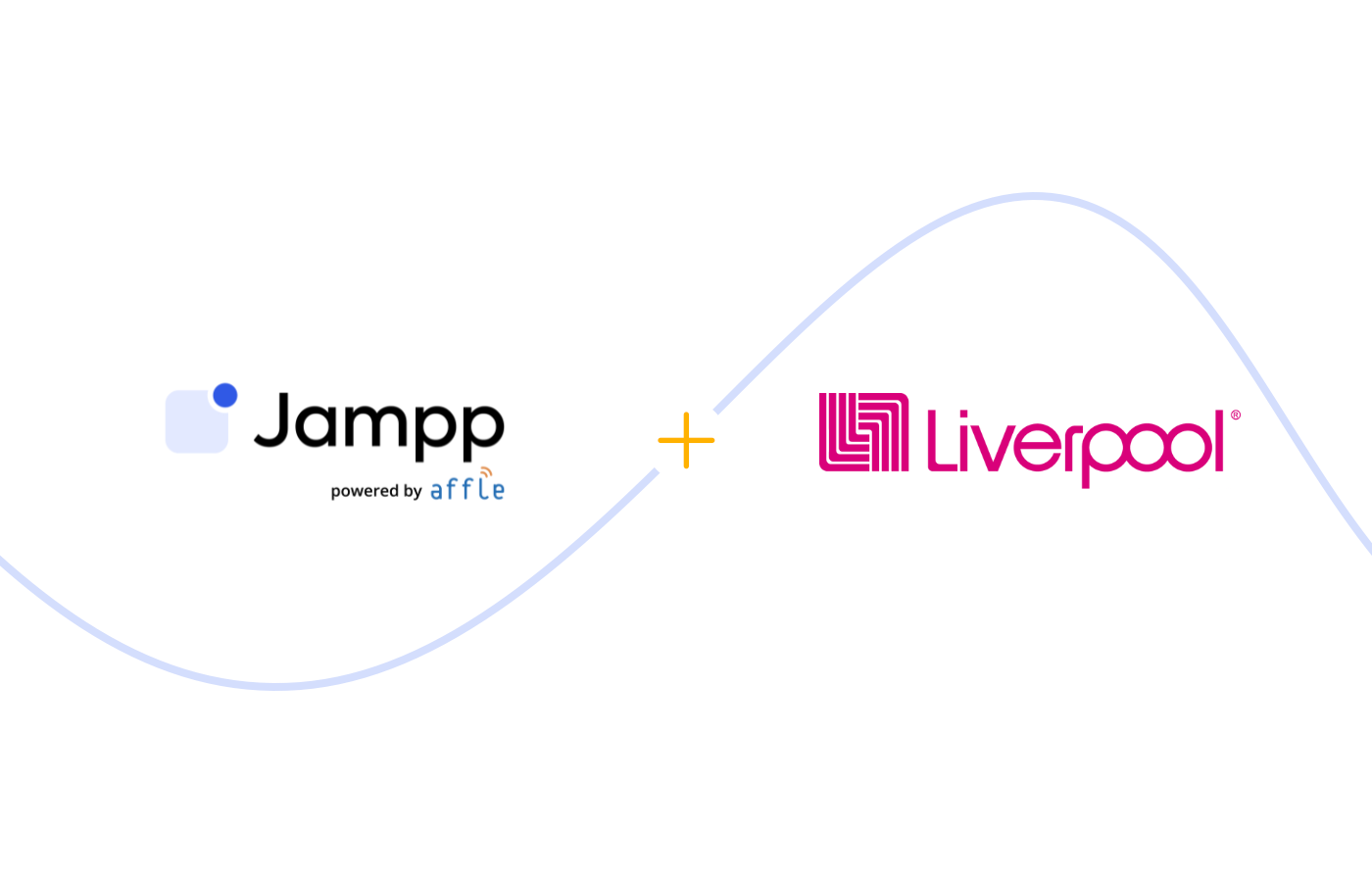The 2020 trends every app marketer should know about 🔮
Is your app marketing strategy ready for these 2020 trends? From the mobile ad formats gaining traction to the rise of super apps…
January 9, 2020

It’s an exciting time for mobile advertising. We rounded up a few topics, from mobile ad formats gaining traction to app marketing strategies that are likely to keep coming up this 2020.

#1 Marketing ❤️ Product
Over the past year, we’ve started to see marketing teams integrating with product teams, and it seems we’re not the only ones to pick up on this — Adjust’s Mobile Spree recap reported a similar trend: “UA managers won’t be able to rest on their laurels… but integrating with the product side of things will give UA managers leverage to grow further in their roles and remain integral” from their conversation with top gaming app marketers.
In line with this, we’ve seen a steady rise of Chief Growth Officers (CGOs) in the advertiser teams we work with. While Linkedin might make it seem like the natural evolution of “growth hacker”, the c-level role of CGOs is meant to bring the different key areas that drive growth under one umbrella: Marketing, Sales, Product, and Finance ☂️.
#2 Combining User Acquisition and App Retargeting
For many of our advertisers, App Retargeting is now considered a key aspect of User Acquisition. Is an install the same as a new user? Most advertisers would say no. So when is that user really acquired? With the app open? With the first order?

It’s easy to see how App Retargeting has become more popular. 79% of new customers leave within the first 7 days after install, and 39% of users don’t even make it to the first week, abandoning an app on day one after install¹. This explains why 65% of mobile advertisers across all verticals are investing more in this strategy than in previous years². With App Retargeting accounting for 1 in 4 conversions 😱², it seems that app marketers implementing engagement tactics early on in their user’s lifecycle are indeed on the right path.

#3 The rise of programmatic on the supply side 🌅
Over the last couple of years, many networks have transitioned to real-time programmatic exchanges, or at least hybrid solutions that work as an alternative to the traditional network model like Pubnative, IronSource, and Inmobi, to name a few.
Additionally, over the past year, many exchanges and platforms have developed in-app bidding solutions designed to woo publishers away from the comfort of their waterfalls, which has further increased the number of impressions mobile app publishers are transacting through programmatic auctions, and in-app bidding spend has grown 20% quarter-on-quarter in Q3 of 2019, according to PubMatic³.
There is still some hesitation from publishers which some attribute to a lack of understanding of this technology. Luckily many companies are in a good position to help drive this change, such as Google and Mopub with their unified auctions, and Stack’s BidMachine with their in-house solution for publishers. As this trend continues, we may start to see “publishers feeling empowered to take back control of their inventory to such an extent that we may see them start demanding programmatic buys for those who wish to access their inventory.”
#4 Embracing the switch to first-price auctions and Header Bidding
The adoption of Header Bidding and first-price auctions will continue to increase. Especially after Google moved to 1st price last March, both publishers and advertisers have followed suit. We’ve seen some of our partners like BidMachine and Smaato switch to first-price, the latter actually offering a hybrid model that enables DSPs that still don’t work with first-price auctions to access this inventory as well.
Header Bidding gives advertisers equal opportunities to access quality inventory, and together with first-price pricing models, it provides further transparency into the auction process at great results for both publishers and advertisers.
Buyers have been leveraging “bid shading” to win auctions by reducing their bids as much as possible while at the same time maximizing margins. Even if first-price auctions can cause an initial increase in CPM, this trend is expected to reverse once all the DSPs have adapted their bidding strategy.
#5 Moving in the right direction with location-based ads

Location-based marketing is expected to reach $235.1B worldwide⁴. This trend is already in the works: according to Smaato’s latest Global In-App Advertising Trends Report, 60% of retailers in North America will invest in location-based marketing in 2019 and 70% of companies in the US are already using location-based ads.
The adoption of location-based marketing is not just driven by advertisers: on the supply side, a great variety of apps are requiring users’ location data to provide specific services. As more and more publishers adapt to meet the high demand for location-based marketing, the categories with the highest share of in-app ad spending fueled by GPS data include Travel, Home & Garden, and Social & Dating among others.

Evidently, mobile users are more willing to share their location data when doing so is necessary to enable a specific service (75%), gives them financial benefits such as discounts and rewards (71%), provides them with additional useful and relevant information (68%), or allows them to save time (67%)⁵.
#6 It only takes 6 seconds ⏱️
Wait… 🔮You’re probably thinking “this isn’t new… I’ve been seeing stats about video ads growing for the last couple of years.’’ Ok, maybe that’s not at all what you’re thinking, but if you were… you wouldn’t be wrong. Video has been steadily growing for the last couple of years. Mobile video ads rose 65% to $10.2B in 2018, surpassing the 37% growth for digital video in all formats, according to an annual report by the Interactive Advertising Bureau and PricewaterhouseCoopers.
When talking about video, there’s been a lot of discussion around the ideal length, with new data making a strong case for keeping it short… 6-second short.
- According to worldwide data collected by Google in 2018, a series of three 6-second ads (a.k.a “bumper ads”) leaves a greater impression on consumers than showing a single 30-second ad.
- Twitter, which attributed more than half of its ad revenue in 2018 to video ads, recently rolled out an update to its ad bidding so it only charges advertisers if their 15-second spots are watched for six seconds or more.
- Last year, Snapchat introduced non-skippable, six-second commercials during premium shows in the image-messaging app’s Discover section.
Understandably, 6 seconds doesn’t sound like much, but given the gradual reduction of attention spans, it seems that showing a series of short ads actually works better than showing one long ad.
#7 I want it all, and I want it now: The rise of super apps
On-demand players in emerging markets are trying to aggregate multiple services on their app to create a one-stop-shop that covers all their users’ needs. This model has seen incredible growth in certain markets.
Top players across APAC include Grab and GoJek. These two apps in particular achieved 139M and 108M downloads, respectively. Initially transport apps, both companies have evolved to offer a complete suite of services, including food and grocery delivery, transport functionalities, and health services, as well as financial solutions.

In Latin America, Glovo and Rappi launched their apps with the pitch “order anything”, which motivated preexisting food delivery services like PedidosYa to also incorporate additional functionalities in order to remain competitive and top-of-mind. As both apps gained momentum this year, Rappi raised $1B in funding exclusively for Latin America, and Glovo achieved a further $185.5M to be used across its key markets.
This trend is not just for emerging markets. Earlier this year, Uber CEO Dara Khosrowshahi said: “What we want to be as a company is the operating system for your daily life. The revamped Uber app will let users choose rides or Eats as soon as they open the app. The company also teased grocery delivery, and will apparently be adding more transit options so riders can see bus or subway routes, cost, and ETA, and buy tickets from the app — in some markets.
Wrapping Up
Do you agree? Are there any trends we failed to mention? We’d love to hear your thoughts. At Jampp we think BIG and long term, we believe it’s still day one for the mobile industry and we love working on new challenges with smart marketers who are shaping the way we interact with the world and each other through kickass apps.
References
[1] “Adjust Global App Trends 2019,” Adjust, 2019.
[2] “Ready for the Retargeting Opportunity?,” Appsflyer, 2019.
[3] “Talking Programmatic with PubMatic,” PubMatic, 2019.
[4] “Location Based Advertising (LBA) Market,” Market Insights Reports, 2019.
[5] “The Privacy Paradox Reloaded: Changes in Consumer Behavior and Attitudes Since 2018,” Technologies, 2019.
Subscribe to our email newsletter









